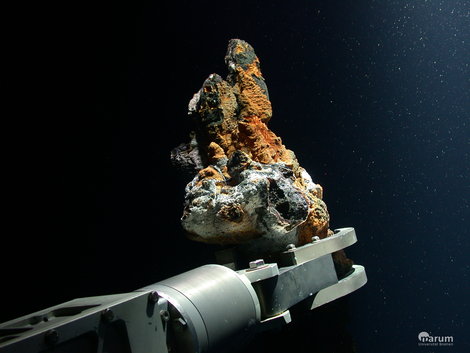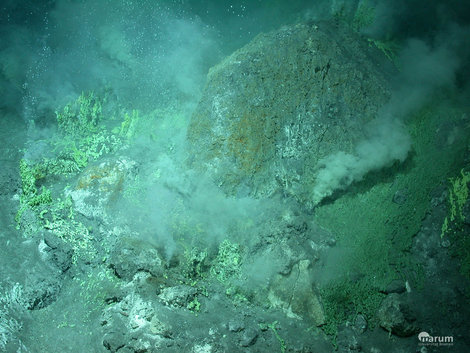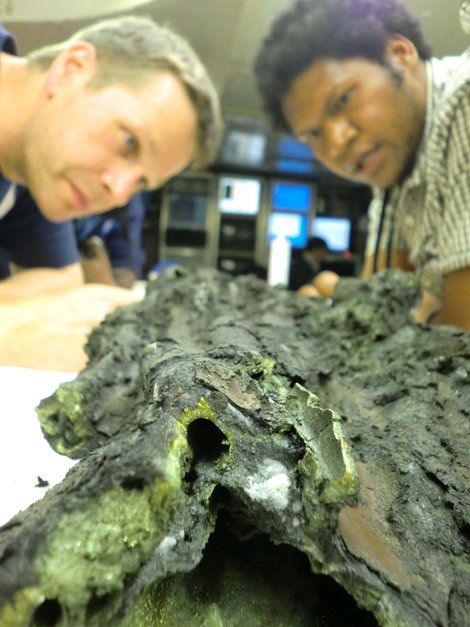Page path:
Project GB4
From element and energy fluxes to vent ecosystems
W. Bach, N. Dubilier, R. Amann, S. Kasemann, A. Koschinsky-Fritsche, C. Borowski
A. Boetius, S. Bühring, T. Ferdelman, K.U. Hinrichs, N. Jöns, A. Klügel, A. Lüttge, T. Pichler, V. Schlindwein, M. Walter, F. Wenzhöfer, M. Zabel
A. Boetius, S. Bühring, T. Ferdelman, K.U. Hinrichs, N. Jöns, A. Klügel, A. Lüttge, T. Pichler, V. Schlindwein, M. Walter, F. Wenzhöfer, M. Zabel
Objectives
Understanding the linkages between geochemical energy release and chemosynthetic energy harnessing at hydrothermal vents.
Background
Plate-tectonics drives the creation of new seafloor along mid-ocean ridges and above subduction zones. Hydrothermal circulation of seawater within the newly formed crust fluxes reduced components to the seafloor, which fuel copious life at vents. These geofuels are inorganic energy sources released by magmatic and hydrothermal processes that are incompletely understood. The goal of research area GB4 is to develop and test models that relate geofuel flux and vent ecology, using a range of methods from bioenergetics theory to in situ sensor measurements to molecular biology.
Study areas
Very slowly spreading mid-ocean ridges with scarce volcanism, such as the South West Indian Ridge or Gakkel Ridge in the Arctic Ocean, host abundant vent systems in tectonically exhumed mantle rock. Hydrothermal circulation in these settings results in extremely H2-rich highly alkaline fluids. These fluid properties are considered vital for prebiotic chemistry, and such systems also host specifically adapted microbial ecosystems. Organic compounds in such vent fluids may also play a critical role in providing metabolic energy sources for microbes, as well as complexing agents for metals. Our research will advance the understanding of 'geofuel' delivery, from magmatic-tectonic-hydrothermal feedbacks during exhumation of mantle rock, to their ultimate consumption by free-living and symbiotic microorganisms. we will speifically concentrate on unexplored systems of this type at high latitudes. A second focus will be on contrasting eruptive systems venting highly acidic fluids on submarine volcanic arcs and backarc basins, such as the Manus Basin in Papua New Guinea. The low pH, CO2 and SO2rich fluids venting in these settings are rich in metals, and a previously unrecognized source of such elements to the oceans. Integration of Li and B isotope studies for tracing sub-seafloor magmatic and hydrothermal processes will be applied as a new approach. Determining the geochemical source of elements and compounds and their effects on the biogeochemistry of vent ecosystems will be a primary target of our studies, to better assess the role of hydrothermal vents and cold seeps in ocean element budgets and biodiversity, in collaboration with GB3.
Our reseach is based on the following key hypotheses:
Our reseach is based on the following key hypotheses:
- There is a predictable relation between the most abundant type of geofuel and the metabolism of the dominant primary producer of biomass at vents
- Geochemical variability on basin scale is reflected in metabolic diversity ("the environment selects")
- Plate tectonics-related differences in geofuel flux on a global scale influence the global distribution of submarine chemolithoautotrophs
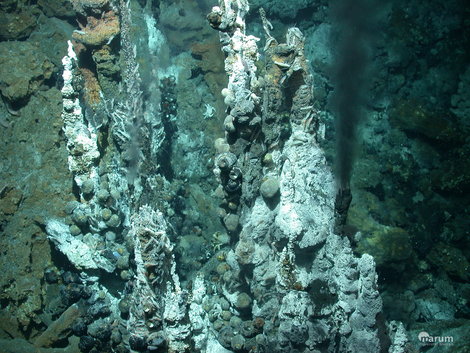
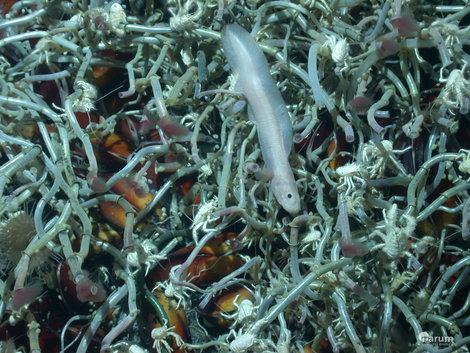
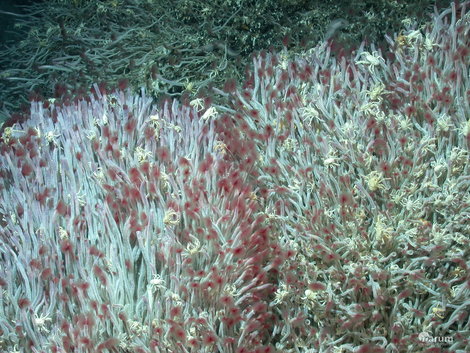
Back to Geosphere-Biosphere Interactions



